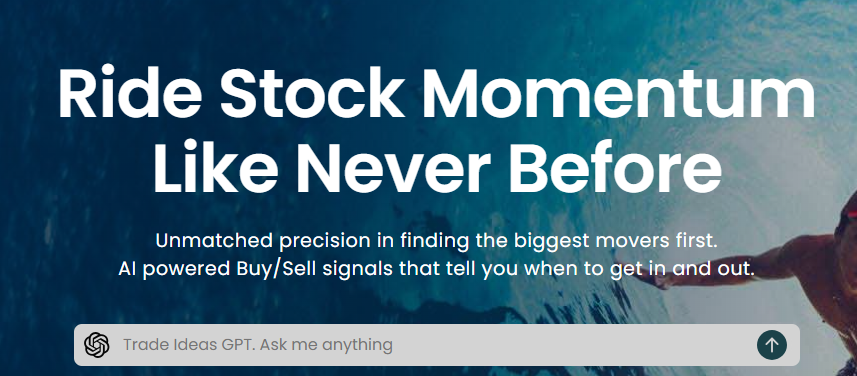20 Handy Reasons On Deciding On AI Stock Trading Platform Websites
20 Handy Reasons On Deciding On AI Stock Trading Platform Websites
Blog Article
Top 10 Ways To Assess The Market Coverage Provided By Ai-Based Stock Predicting/Analyzing Platforms
The coverage of markets on trading platforms that use AI analysis and prediction of stocks is crucial because it defines the markets and assets you have access to. A platform that offers comprehensive market coverage can allow you to diversify portfolios, explore global trading opportunities and adapt to different strategies. These are the top ten tips to evaluate the market coverage offered by these platforms:
1. Evaluate Supported Asset Classes
Stocks - Ensure that the platform is able to provide coverage of the major stock markets (e.g. NYSE NASDAQ LSE HKEX) in addition to includes mid-caps, small-caps, and large-caps.
ETFs: Make sure that the platform provides an array of ETFs to give you a variety of exposure to different categories, themes and even regions.
Futures and options: Determine whether the platform supports derivatives, such as futures, options and other leveraged instruments.
Commodities and Forex: Determine whether the platform offers the forex pair and precious metals, energy commodities as well as agricultural commodities.
Cryptocurrencies: Check if the platform is compatible with major copyright (e.g., Bitcoin, Ethereum) and altcoins.
2. Check for Geographic Coverage
Global markets: Ensure that the platform has major markets in the world like North America, Europe and Asia-Pacific.
Regional focus: Check whether your platform has a particular focus on a region or market that is compatible to your trading needs.
Local exchanges: Verify if your platform supports local and regional exchanges that match your needs or your business plan.
3. Assessment Real-time as opposed to. delayed data
Real-time data is essential to make quick decisions, particularly in active trading.
Delayed data - Check whether delayed data is free or available at a cheaper price. This could be enough for investors looking to invest for the long run.
Data latency - Verify that the platform minimizes the delay of feeds that are real-time. This is particularly important for high-frequency traders.
4. Review Historical Data Available
Depth and breadth of historical data: Make sure that the platform has ample historical data available (e.g. for at least 10 years) to allow backtesting.
The granularity of the data: Determine if the historical data includes daily, intraday weekly, monthly, and daily level of granularity.
Corporate actions: Examine for evidence that data was accounted for prior to. Dividends, stock splits, and all other corporate actions need to be included.
5. Check market depths and order books
Data Level 2: Ensure the platform has Level 2 (order book depth), for better price discovery.
Be sure to check for live bidding and asking spreads. This will guarantee that the pricing is correct.
Volume data - Verify whether the platform provides extensive volume data to analyze market activity and liquidity.
6. Assess the Coverage of Indices Sectors
Major indexes - Ensure that the platform is compatible with major indices like S&P 500 and FTSE 100 to benchmark.
Sector-specific data: Check if the platform provides data for specific sectors (e.g., technology or healthcare, energy,) for analysis that is targeted.
Custom-made indexes. Find out if you are able to create or monitor custom indices using your own criteria.
7. Evaluate integration with News and Sentiment
News feeds: Ensure the platform incorporates real-time news feeds from reputable sources (e.g., Bloomberg, Reuters) for market-moving events.
Utilize the sentiment analysis tool on the platform based on data from social media, news or other sources.
Event-driven strategies: Determine whether the platform supports events-driven trading strategies (e.g., earnings announcements, economic reports, etc.).
8. Check for Multi-Market Capabilities for Trading
Cross-market trading: Make sure that the platform allows for trading across different markets and asset categories from a common interface.
Conversion to currencies: Make sure the platform offers multi-currency and automatic conversion of currencies for international trade.
Verify that you are in compliance with time zones.
9. Review the coverage of different data sources
Alternative data: To get unique insights, verify if the platform is able to incorporate alternative sources of data.
ESG information: Find out whether the platform offers environmental Governance, Social and Governance (ESG), or other data that can support socially responsible investments.
Macroeconomic data: Ensure that the platform has macroeconomic indicators to conduct fundamental analysis (e.g. GDP and inflation rates, as well as rate of interest).
10. Review Customer Feedback and Market Reputation
Feedback from users: Read user reviews to determine the platform's reliability and market coverage.
Find out the reputation of the platform in relation to its coverage and awards.
Case studies and testimonials: These will highlight the platform's performance in specific markets or classes of assets.
Bonus Tips
Trial period: You can use a demo, trial or free trial to evaluate the coverage of markets as well as data quality.
API access: Check if the platform's API allows access to market data programmatically for custom analysis.
Support for customers: Make sure the platform offers support for market-related inquiries or data issues.
By using these tips you can be able to accurately evaluate the coverage of AI stock prediction/analyzing trading platform. Then, you can select a trading platform that offers you the markets and the information you need to make successful trades. Comprehensive market coverage lets you to diversify your portfolio and discover the possibilities of your portfolio. It also assists you adapt to changes in market conditions. See the most popular ai for investing for site examples including trading with ai, ai stocks, best ai trading app, ai investment app, ai stock market, ai stock trading, ai investing, ai for investing, chart ai trading assistant, incite and more.
Top 10 Tips On Risk Management Of Ai Trading Platforms That Can Predict Or Analyze The Price Of Stocks.
Risk management is a key element of any AI trading platform. It can help protect your capital while minimizing potential losses. Platforms with strong risk management capabilities will help you navigate the turbulent stock markets and make an informed decision. Here are ten strategies to help you evaluate the risk management capabilities of these platforms.
1. Analysis of Stop-Loss and Take-Profit Features
Customizable Levels: Ensure that the platform allows you to set individual stop-loss levels and take-profit targets for trades or strategies.
Trailing stops: Check if your platform supports trailing stops that are automatically adjusted as the market changes to your advantage.
It is important to determine if there are any stop-loss strategies that guarantee your position to be closed at the agreed amount, even when the market is volatile.
2. Assessment Position Sizing Tools
Fixed amount: Make sure the platform you are using allows you to adjust the size of your position according to a predetermined amount.
Percentage in your portfolio The best way to manage your risk by establishing positions sizes in proportion to per percentage.
Risk-reward ratio: Check whether you are able to set the risk-reward percentage for specific trades or strategies.
3. Check for Diversification Support
Multi-asset Trading to diversify your portfolio of investments, be sure that the platform you choose supports trading in multiple asset classes.
Sector allocation Check to find out if there are tools available for managing and monitoring exposure to the sector.
Geographic diversification. Verify whether the platform can trade on international markets and spread geographic risks.
4. Evaluation of Leverage and Margin controls
Margin requirements - Check that the platform clearly explains margin requirements clearly.
Examine whether you can establish leverage limits in order to limit the risk you take.
Margin call notifications: Make sure that the platform is able to provide regular notifications on margin calls to prevent account liquidation.
5. Review the Risk Analytics Reporting
Risk metrics: Make sure the platform provides key risk metrics (e.g. Value at Risk (VaR) Sharpe ratio drawdown, Sharpe ratio) for your portfolio.
Scenario Analysis: Determine the platform you use allows the capability of generating different market scenarios in order to assess possible risks.
Performance reports: Find out whether you can obtain detailed performance reports from the platform, which include risk-adjusted performance results.
6. Check for Real-Time Risk Monitoring
Portfolio monitoring: Ensure that the platform provides real-time tracking of the risk exposure to your portfolio.
Alerts and notifications: Verify whether the platform offers real-time alerts for risk-related events (e.g. margin breach or Stop-loss triggers).
Risk dashboards: Make sure your platform offers an adjustable risk dashboard that gives you a full view of your profile.
7. How to evaluate the results of Stress Testing and Backtesting
Stress testing. Make sure your platform allows for you to test your portfolio or strategy under extreme market circumstances.
Backtesting: Find out if the platform supports backtesting of strategies using previous data to evaluate risk and performance.
Monte Carlo: Verify the platform's use of Monte-Carlo-based simulations for assessing the risk and estimating a range of possible outcomes.
8. Assess Compliance with Risk Management Regulations
Compliance with Regulations: Check the platform's compliance with relevant Risk Management Regulations (e.g. MiFID II for Europe, Reg T for the U.S.).
Best execution: Make sure that the platform follows the most efficient execution procedure, which makes sure that trades are carried out at the best price in order to minimize any loss.
Transparency. Check that the platform is clear and makes clear disclosures of potential risks.
9. Examine for Risks that are User Controlled Parameters
Custom Risk Rules: Ensure that you can define custom rules for risk management (e.g. an amount that is the maximum loss per day, a certain size of a tradable position).
Automated risks controls: Verify whether the system can automatically implement rules for risk management based on your defined parameters.
Manual overrides: Ensure that your platform allows manual overrides in emergencies.
User feedback from reviewers and case studies
User reviews: Review user feedback to determine the effectiveness of the platform's managing risk.
Case studies: Look for case studies or testimonials highlighting the platform's risk management capabilities.
Community forums - Search for yourself if the platform offers a user community that is active and where traders can share their risk management strategies.
Bonus Tips:
Free Trial: Test the platform's features for risk management in real-world scenarios.
Customer Support: Ensure that the platform is able to offer a full support service in the event of any risk management-related concerns or questions.
Find educational sources.
By following these tips to evaluate the risk management capabilities of AI platform for analyzing and predicting stocks and ensure you select one that will safeguard your investment and reduce potential losses. To manage volatile markets and achieve long-term success in trading you require a reliable risk management software. Take a look at the top good for how to use ai for copyright trading for website recommendations including ai software stocks, stock predictor, ai options trading, ai tools for trading, investing with ai, best stock prediction website, chart analysis ai, stock trading ai, invest ai, ai stock prediction and more.